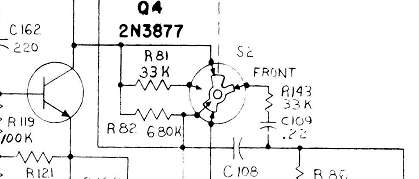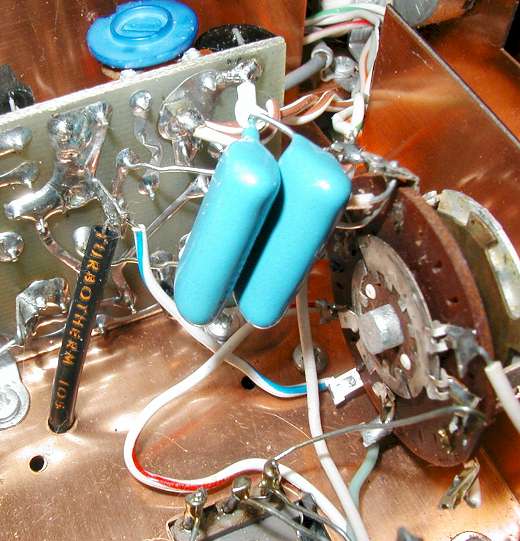Drake Home Page Drake Technical Tips Menu
![]()
|
R4 SERIES AGC MODIFICATION (R4, R4A, R4B, R4C) By: Mark Gilger, WB0IQK The stock R4 series receivers have excellent AGC characteristics. Even though the stock AGC performs very well, I thought there was room for improvement. This modification will enable the user to slow the AGC response, when the AGC switch is in the “Slow” position. The following modification puts the new capacitor in parallel with the original. This modification will need for the user to experiment with several value capacitors to meet their listing needs. The values to try would be starting at .22 uf, .33 uf, or .47 uf and any combination in between. The higher the value, the slower the AGC time response. In my case, I prefer to use two .22uf caps in parallel (.44 uf ). This makes for very pleasing audio characteristics. |
|
|
R4 & R4A Modifications:
R4B Modifications:
|
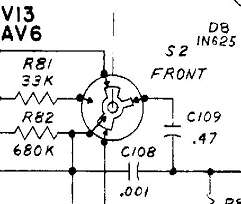 |
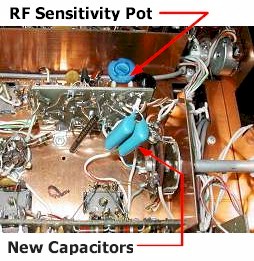 |
|
|
|
|
|
R4C Modifications:
Advantage & Disadvantages: Advantage: A side benfit to slowing down the AGC response has been that the receivers background noice has been reduced. I suspect this is because the receiver cannot respond fast enough to the quick noise pulses, so it blocks them. It’s like having a built in noise blanker. |
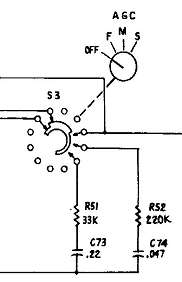 |
|
Disadvantage: When switching from transmit to receive, there is a short lag period before you can hear a weak received signal. The slower the AGC response, the longer this lag. In my case, on my R4B it’s about 1 – 2 seconds.
|
|
